
OR
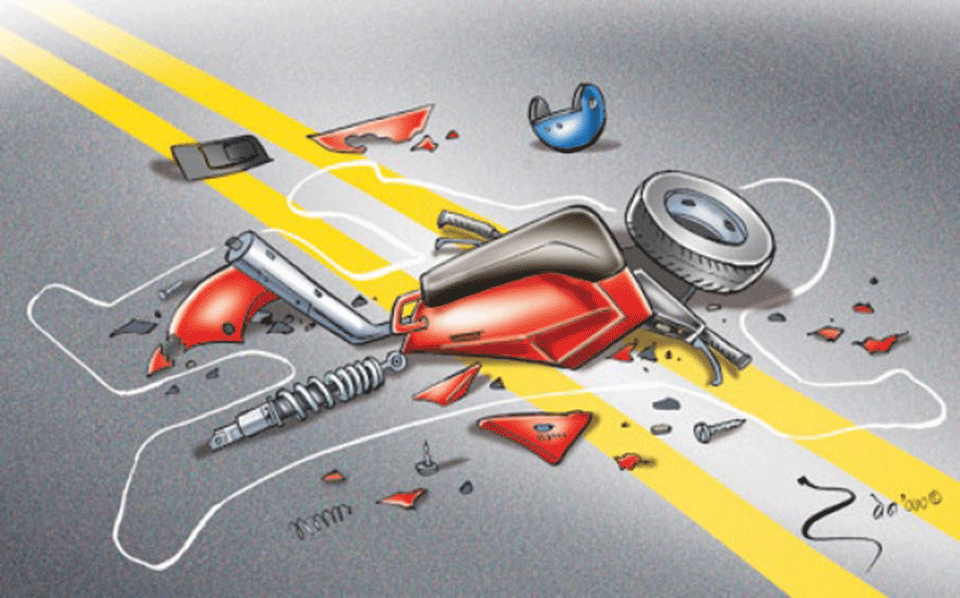
More from Author
With just a bit more precautionary measures, by controlling the road rage and by implementing improved policies, Nepal can reduce road accidents
Amidst the silent horns seeping through the bright “No Horn Please” signs distributed carefully throughout the city, one can hear the screeching sounds of vehicles just moments before crashing into what later becomes ‘a horrendous accident.’ Newspaper reports attribute it to innumerable causes: rash driving, bad road, and foggy weather, careless pedestrians crossing roads and what not.
Eleven people died in Darchula’s jeep accident recently. Earlier, there was a road accident in Nijgad-Pathlaya highway where an in-service police superintendent lost his life and the Chief District Officer (CDO) of Bara, along with four other people, got seriously injured. Another accident landed a pedestrian at the ICU after getting hit by a speeding vehicle. Hardly a day passes by without road accidents being reported, and yet we spend our day in as much of monotony as ever. The very fact that we have come to terms with such news on regular basis elucidates the appalling status of road safety in Nepal.
Alarming statistics
According to an estimate, seven people die every day in road accidents all over Nepal and nearly 2500 people die in road related accidents annually. Official data shows 2,004 deaths occurred in 9,146 accidents during 2014/15. This figure rose to 2,006 deaths in 10,013 accidents the year that followed. In the last fiscal year, 2,541 fatalities were recorded, and this is highest death toll recorded since 2001/02. According to Nepal Police, the country witnessed 10,965 road accidents last year.
Globally, over 1.25 million people were killed and millions injured in road traffic accidents in 2013, according to the 2015 World Health Organization (WHO)’s Global Status Report on Road Safety. Road accidents are the leading cause of death of young people between 18-29 years, which means those getting killed are the breadwinners of their families. Clearly, more people are dying due to road accidents than most diseases despite that such accidents can easily be avoided with some precautions.
And yet, it is lamentable that our policies remain relatively unchanged and the concerned agencies have failed to curb accidents. According to Nepal Police, many accidents go unreported mainly because the parties involved settle the matter themselves. Accidents with minor injury or damage to vehicles are often settled at the accident sites and are not reported. Only accidents causing human injury are reported. As Nepal is getting motorized, often at the expense of road safety, growing road traffic fatality and associated losses to families and communities have become a matter of grave concern.
What went wrong?
The WHO global status report on road safety cites Nepal’s crackdown on drunk-driving and helmet use by motorcycle drivers as two areas where the country has made progress. However, only drivers are required to use helmets, and often it is the pillion rider who is killed in accident.
Drunk-driving tests are being carried out, but there are no rules on permissible amount of alcohol. And the most bizarre rule is speed limit of 80 km/h for both urban and rural roads. School and residential areas lack speed limit rules and enforcement. Nepal does not have any official motorway or any motorway speed limit. The only wide road from Koteswor to Surya Binayak is notorious for fatal accidents.
Nepal has a national seat-belt law but it applies only to the driver and not to front and rear occupants. Not surprisingly, the country also doesn’t have a national child restraint law. Nor any restriction on children sitting at the front seat.
Although arbitrary fines are occasionally slapped, Nepal also doesn’t have a national law on mobile phone use while driving, says the report. For a country where highway crashes are so common, Nepal doesn’t have enough trauma care facilities along roads, nor emergency room surveillance system. There are no emergency access telephone numbers either.
The UN’s post-2015 Sustainable Development Goals (SDGs) have set targets to halve deaths and injuries from road traffic crashes by 2020. Experts and officials agree that it will be extremely challenging for countries like Nepal to reduce road fatality rates and meet those targets within five years.
The way drivers are issued driving licenses in this country is ridiculously simple and yet, the process is overly complicated. The driving license that authorizes a person to go into road with such a potential threat to life and properties are not trained properly before they are issued with licenses. There is no requirement for a formal training before actually taking the test. The test itself is so unscientific and there are thousand ways of getting around the test. The theory test actually asks the candidates about the laws and details of engine and unnecessary things rather than the practical aspects of safe driving. On actual test, after starting a vehicle and moving it back and forth and then parking it into bay a driver is given a pass certificate. And if you have right contact or can bribe the officials, you get the license, even if you fail the test.
Poorly maintained and risky mountains roads, overloading of vehicle, lack of road discipline and poor training of drivers have added to the fatalities. New Zealand, with much more traffic than Nepal in a similar land area, saw only 253 fatalities in 2013.
Our policies and acts are rather outdated, and the laws have way too many loopholes to maneuver through. We have Motor Vehicles and Transport Management Act (1993), which has clear provisions related to road safety, fares, overloading and driver shifts. But almost all these provisions are conveniently overlooked. And syndicate rules the road.
What should be done?
Apart from cracking a whip on these syndicates, the government should also introduce stringent laws for those who violate traffic rules and it should invest in raising public awareness. But that again does not seem to be a priority. Thus, even though the traffic police have repeatedly requested the Ministry of Education to include road safety in school-level curriculum, their pleas have fallen on deaf ears.
Few years ago, cabinet approved new driving license provisions for public vehicles, but they could not be implemented due to protests from transport entrepreneurs. If the provisions had been implemented, a public-vehicle driver would need to be at least 25 and he/she would need to undergo three years of training after obtaining license, before he/she was allowed to drive public vehicles. None of these have been implemented.
There are many ways to reduce road accidents. By controlling drunk-driving, restricting and regulating night buses, strengthening emergency response systems of hospitals through increased funding for training, emergency room supplies, and ambulance services, setting and enforcing mandatory helmet use for cyclists, motorcyclists, and their passengers, increased presence of traffic police on highways and local roads could go a long way.
The total estimated annual loss due to road accidents is around 0.5 percent of national GDP. This isn’t surprising since many breadwinners are badly maimed or killed in road accidents, and many families dragged into the miserable pool of poverty as a result. With just a bit more precautionary measures, with the slightest bit of awareness, by just controlling the road rage for the better of all, by simply implementing improved policies, we could make a difference. Till then, all we can do is be careful on the road and hope somebody else’s carelessness does not cost our lives.
Bista and Thapa are students of master’s degree in Sociology and Economics respectively in Tribhuvan University
You May Like This
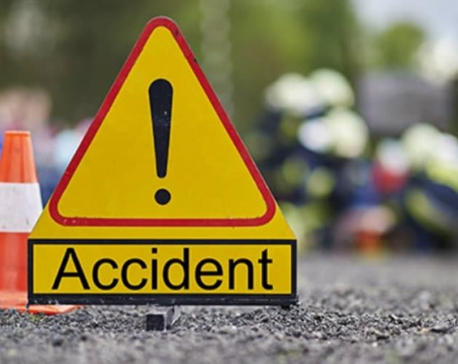
Two die in separate incidents in Sarlahi
SARLAHI, July 23: Two persons died in separate incidents in Sarlahi district. A child Ashish Paswan, 10, son of Sanjay... Read More...

Road Upgrade to Rasuwagadhi commences
RASUWA, June 22: Upgrade of road connecting to Rasuwagadhi has begun. As the roads has degraded and the area is... Read More...
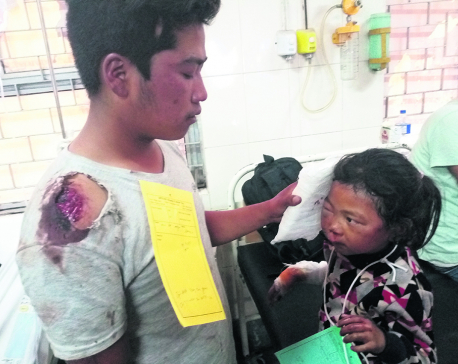
7 killed in two road accidents
DHARAN/ARGHAKHANCHI, April 9: A total of seven people died in two separate road accidents on Monday. One accident occurred in... Read More...



Just In
- Bhajang and Ilam by-elections: 69 polling stations classified as ‘highly sensitive’
- Karnali CM Kandel secures vote of confidence
- National Youth Scientists Conference to be organized in Surkhet
- Rautahat traders call for extended night market hours amid summer heat
- Resignation of JSP minister rejected in Lumbini province
- Russia warns NATO nuclear facilities in Poland could become military target
- 16th Five Year Plan: Govt unveils 40 goals for prosperity (with full list)
- SC hearing on fake Bhutanese refugees case involving ex-deputy PM Rayamajhi today











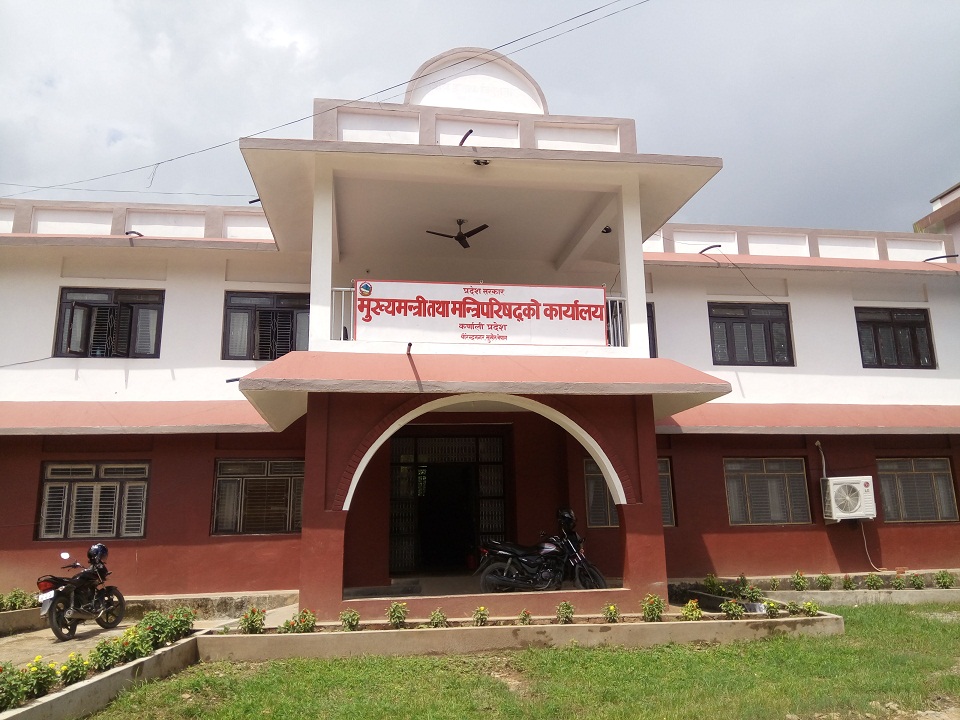

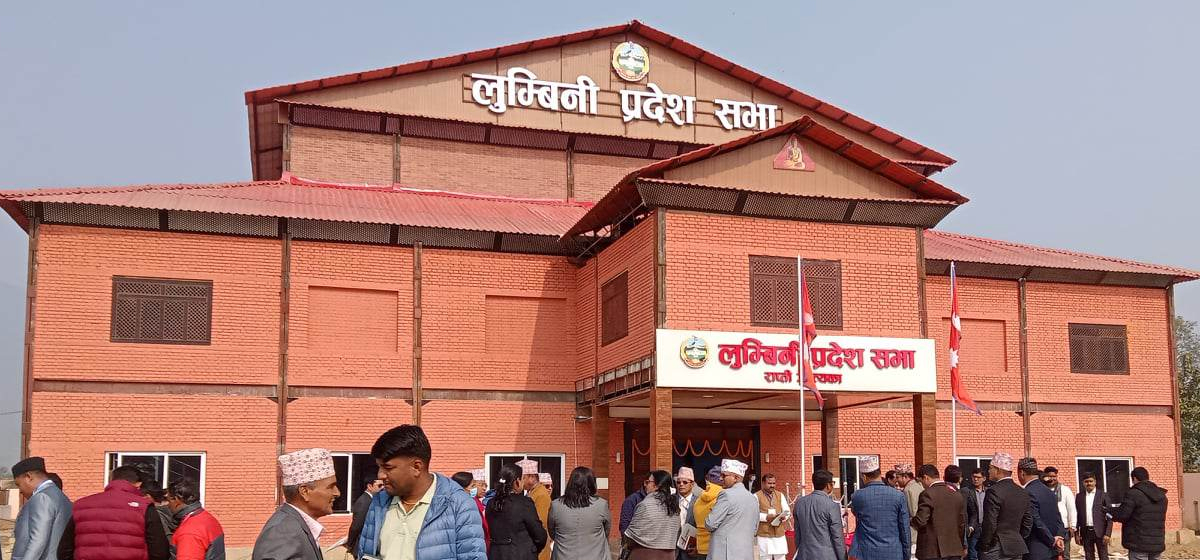


Leave A Comment